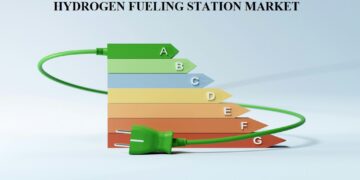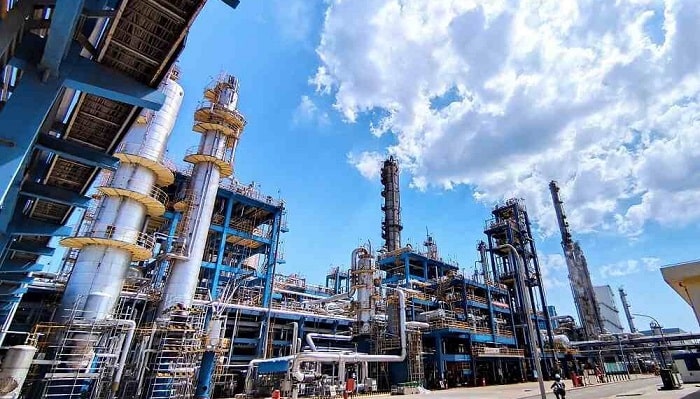Hydrogen has emerged as a critical player in the effort to decarbonize some of the most carbon-intensive industries, such as chemicals, cement, and steel. These industries traditionally depend on fuels like coal, diesel, and kerosene, which contribute significantly to global greenhouse gas emissions. The search for cleaner energy alternatives has led to hydrogen gaining prominence as a potential solution due to its high energy density and low emissions profile, making it an optimal replacement for traditional carbon-heavy fuels.
The Role of Hydrogen in Heavy Industries
Decarbonizing heavy industries is a complex task due to their inherent reliance on high-carbon fuels and energy-intensive processes. The introduction of hydrogen, with its ability to produce energy without releasing carbon dioxide when used in fuel cells, presents an opportunity to significantly reduce emissions in these sectors. Hydrogen, particularly green and blue hydrogen, is being explored for its potential to power these industries while minimizing environmental impact.
ExxonMobil’s Baytown Project: A Blueprint for Blue Hydrogen
One of the most prominent examples of hydrogen’s role in decarbonizing heavy industries is ExxonMobil’s Baytown facility in Texas. This project is a large-scale application of blue hydrogen, which is produced by converting natural gas into hydrogen while capturing the carbon dioxide emissions. At Baytown, over 98% of the CO₂ generated during the hydrogen production process is captured and sequestered. This allows the project to reduce site-wide CO₂ emissions by up to 30%, showcasing the potential for hydrogen to mitigate industrial emissions.
The collaboration between ExxonMobil and Air Liquide at Baytown ensures a steady supply of oxygen and nitrogen, essential for the hydrogen production process. This partnership is part of ExxonMobil’s broader goal of achieving net-zero emissions by 2050, underscoring the strategic role hydrogen plays in their decarbonization efforts. Additionally, the scale of this project, combined with its emissions capture capabilities, sets a strong precedent for similar initiatives worldwide.
Verdagy Inc.: Pioneering Green Hydrogen
While blue hydrogen offers a more immediate solution for reducing emissions, green hydrogen, produced through electrolysis powered by renewable energy, represents a longer-term vision of a sustainable energy future. One company at the forefront of this innovation is Verdagy Inc., based in Silicon Valley. Verdagy focuses on green hydrogen production using advanced alkaline water electrolysis, an energy-efficient process that splits water into hydrogen and oxygen using renewable electricity.
Verdagy’s approach is notable for its scalability and cost-efficiency. The company has developed modular electrolyser systems designed to address the cost challenges associated with green hydrogen production. By 2026, Verdagy aims to produce hydrogen at $2 per kilogram, aligning with the U.S. Department of Energy (DOE) targets. Achieving this cost reduction would make green hydrogen a viable alternative to fossil fuels for various industrial applications, further accelerating the transition to a clean energy economy.
Strategic collaborations with industrial giants such as Doral and Samsung indicate Verdagy’s potential to scale up its operations and become a key player in the global hydrogen market. The company’s innovative technologies, combined with its strong partnerships, position it to play a significant role in meeting the growing demand for green hydrogen in heavy industries and beyond.
Hydrogen in Transportation: A Path to Zero-Emission Mobility
The transportation sector, another significant contributor to global emissions, stands to benefit greatly from the adoption of hydrogen as a clean fuel. Hydrogen, used either in combustion engines or in fuel cells, provides a zero-emission alternative for long-haul and heavy-duty transport, including aviation, shipping, and trucking.
In aviation, hydrogen can be used in fuel cells to power electric motors, or in modified combustion engines to reduce greenhouse gas (GHG) emissions. Similarly, hydrogen-powered ships and trucks offer a sustainable alternative to diesel engines, which are widely used in freight transport but contribute heavily to global emissions.
The versatility of hydrogen also extends to other sectors, including light industries and domestic applications. Hydrogen can be used to power buses and cars, cargo cranes at ports, and even in building heating systems. This broad applicability highlights hydrogen’s potential to revolutionize not only heavy industries but also everyday transportation and infrastructure.
Decentralized Hydrogen Production: BayoTech’s Model
One innovative approach to hydrogen production comes from BayoTech, a company focused on decentralized hydrogen generation. BayoTech utilizes biomethane, a renewable natural gas, to produce hydrogen, creating a lower-carbon solution for local energy needs. By decentralizing hydrogen production, BayoTech’s model enables communities to reduce their emissions on a smaller, localized scale, contributing to the broader global effort to decarbonize.
This approach complements larger-scale hydrogen initiatives, such as those being developed by the U.S. Department of Energy (DOE). The DOE’s hydrogen hubs, which include projects like the HyVelocity Hub on the Gulf Coast, aim to create a coordinated hydrogen infrastructure that integrates production centers, dedicated pipelines, and job creation. These hubs represent a comprehensive approach to embedding hydrogen into the U.S. energy transition, with a focus on both blue and green hydrogen.
Blue vs. Green Hydrogen: Cost and Feasibility
While both blue and green hydrogen offer pathways to decarbonization, they present distinct cost structures, production processes, and environmental impacts. Blue hydrogen, derived from natural gas through steam methane reforming (SMR), is currently more cost-effective, with prices ranging from $2 to $5 per kilogram. This lower cost is due to the availability of natural gas and the relative ease of methane reforming. However, blue hydrogen’s environmental impact depends on the efficiency of carbon capture and storage (CCS) technologies, as methane leakage remains a concern.
In contrast, green hydrogen, produced through water electrolysis powered by renewable energy, achieves a zero-carbon footprint but comes at a higher cost, currently between $4.5 and $12 per kilogram. This higher price is driven by the cost of renewable energy and the current state of electrolyser technology, which is still developing. Nevertheless, companies like Verdagy are working to reduce these costs through technological advancements, aiming to meet the DOE’s target of $2 per kilogram by 2026.
Despite the differences in cost and feasibility, both blue and green hydrogen have critical roles to play in the global energy transition. Blue hydrogen offers an immediate solution for reducing emissions in industrial sectors, while green hydrogen represents the long-term goal of a fully sustainable energy system. Balancing investments in both technologies will be crucial for achieving global decarbonization targets.
Environmental Impacts of Hydrogen
The environmental benefits of hydrogen depend on the type of hydrogen produced. Blue hydrogen, while reducing CO₂ emissions through carbon capture, still poses challenges related to methane leakage during natural gas extraction and processing. Methane is a potent greenhouse gas, and even small leaks can have significant environmental consequences.
Green hydrogen, on the other hand, has a minimal environmental footprint when produced using renewable energy. However, green hydrogen production requires large amounts of purified water, which could pose challenges in regions where water scarcity is an issue.
Conclusion: Hydrogen’s Role in the Energy Transition
Hydrogen is poised to play a pivotal role in the global transition to a lower-carbon economy. Its versatility, scalability, and potential for reducing emissions in hard-to-decarbonize sectors make it a valuable tool in the fight against climate change. Whether through blue hydrogen’s immediate impact on industrial emissions or green hydrogen’s long-term sustainability, hydrogen will be central to achieving global decarbonization goals.
Companies like ExxonMobil and Verdagy are leading the way in demonstrating the potential of hydrogen, with large-scale projects that combine innovative technologies and strategic partnerships. As hydrogen production costs decrease and infrastructure expands, hydrogen’s role in the global energy mix will only continue to grow, bringing us closer to a cleaner, more sustainable future.







































